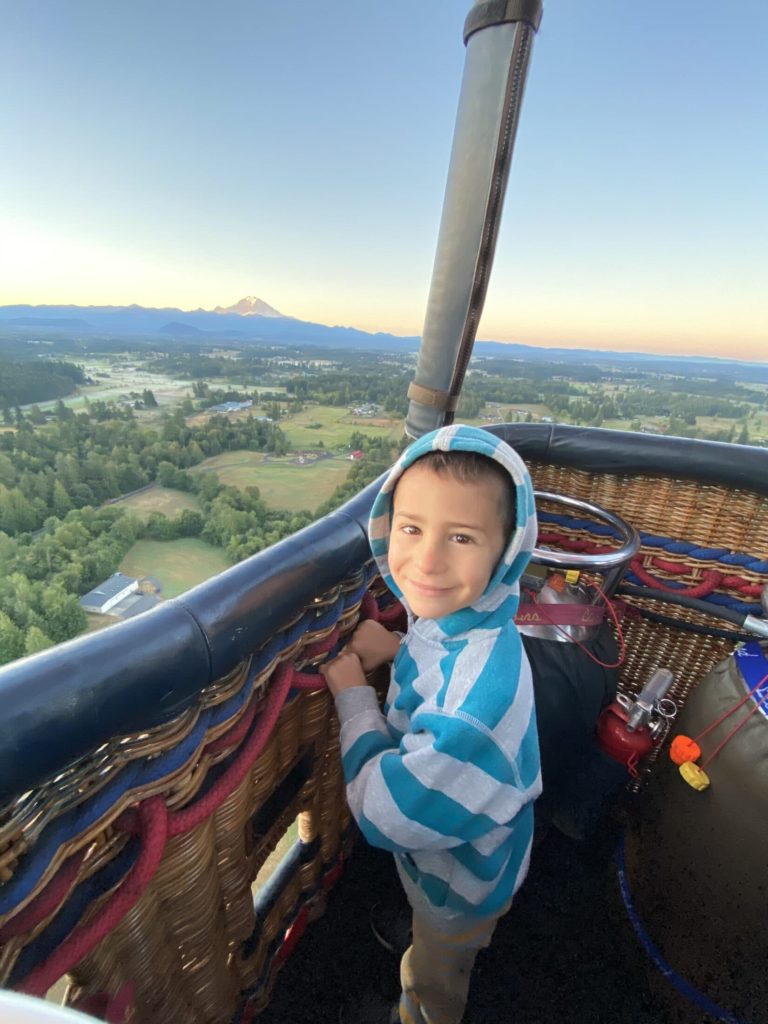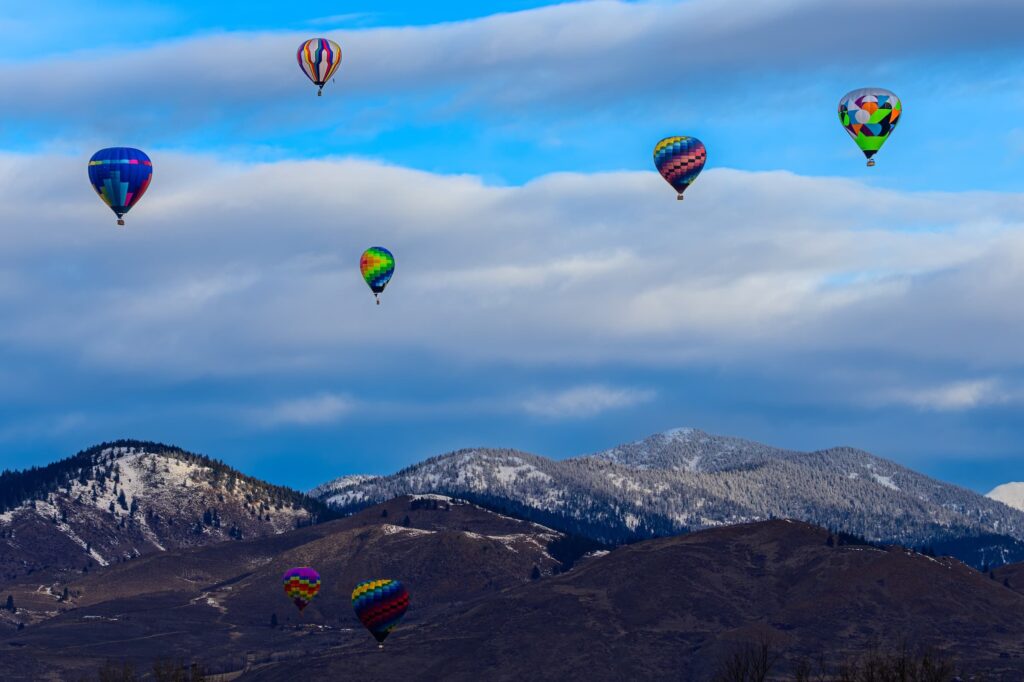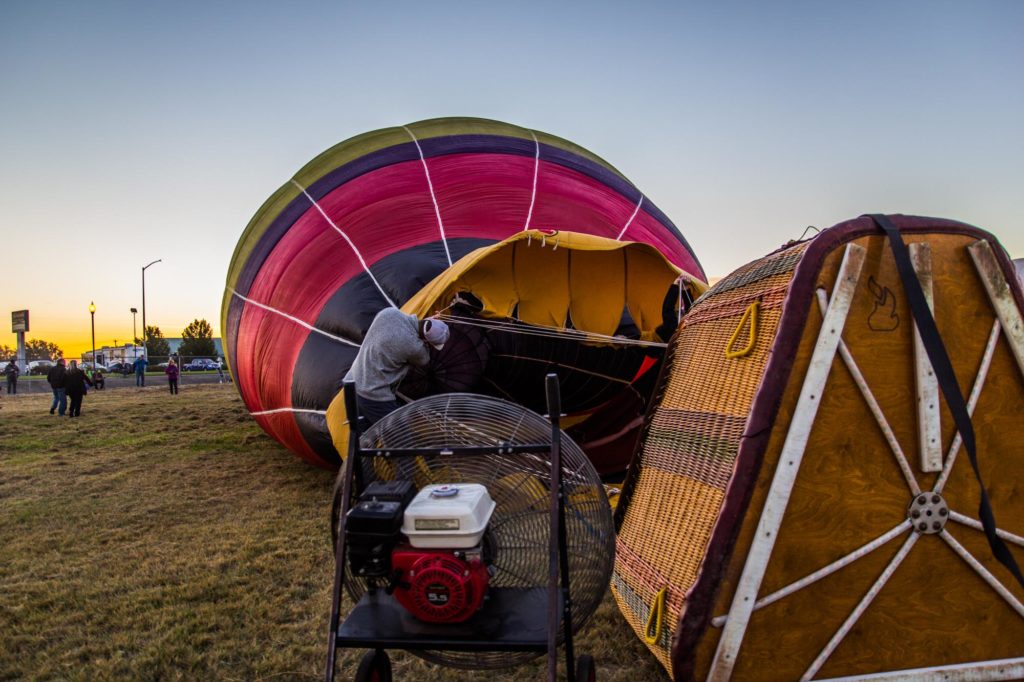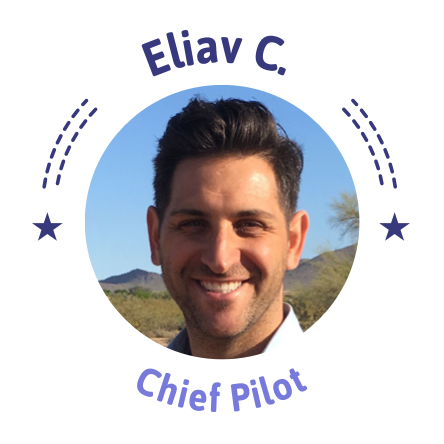Becoming a hot air balloon pilot!
Have you ever looked up into the sky and seen a hot air balloon soaring above? It’s an awe-inspiring sight. The idea of being able to fly like that is equally as thrilling. How do you become a hot air balloon pilot? Read on for some tips from the experts!

What do you need to be a hot air balloon pilot?
Well, it takes a lot of preparation. You’ll first have to take courses in meteorology, aeronautics, and navigation from a flight instructor. After that, you’ll need to pass a written FAA certification exam and take an FAA practical test. Today, we’ll break down what it takes to become a hot air balloon pilot.
Do you want to fly for fun or possibly start a balloon flying career?
The sky is the limit for what you can do with a hot air balloon! You could fly solo, take friends and family on an adventure, or compete in ballooning competitions. Or maybe this is a future career path – making money by flying guests in exchange for payment. What will you choose?
Most people get into hot air ballooning because it is a ton of fun, and they love the feeling of flying in a balloon. You also don’t have to become a pilot to get involved in ballooning. You can also become part of a hot air balloon crew. Being part of a hot air balloon crew means you’ll help with the setup and takedown of the balloon and be responsible for chasing it from a vehicle! It’s a ton of fun.
You need to make sure you have the time and money for your hot air balloon pilot’s license. There are multiple ways to do it from any budget. We’ll run through the requirements for getting your lighter than are or LTA pilots license.
There are three types of hot air balloon or lighter-than-air (LTA )licenses
Student Balloon Pilot license: Allows students to learn to fly hot air balloons, get burner time, and solo. You can’t carry other passengers unless there is a commercial pilot onboard with you. You can take friends with you during your training flights!
Private Balloon Pilots license: Can carry passengers, but not for money. Passengers can help spilt some of your costs but you cannot fly in any commercial capacity.
Commercial Balloon Pilots license: Can operate for hire, provide flight instruction, and engage in commercial ballooning activities.
Understand the Requirements for Your Level of Interest
To be a hot air balloon pilot, you need to obtain your hot air balloon license or airman certificate! Hot air balloons are much different from airplanes and have their own set of training requirements.
Becoming a balloon pilot is an exciting adventure! The first requirement to become a balloon pilot is passing the Lighter Than Air (LTA) certification, which requires one-on-one lessons with a flight instructor and other requirements. There is no certified flight instructor rating for hot air balloons, so all t flight instruction is provided by a pilot who has a commercial balloon license.In order to fly high in the sky, you’ll need to pass some exams as well. You can start by getting your student pilot certificate and work your way up from there!
The requirements for a pilot certificate are quite extensive. To get started, you must meet the requirements of the student level. After that, it’s just a long series of training and tests until finally achieving your full license!
Student Balloon Pilot Certificate Requirements
Personal Requirements:
Students must be 14 years or older, able to read, speak, write and understand the English language.
The FAA does not require balloon pilots to have a medical certificate. Pilots however cannot have a condition that would prevent them from operating the balloon safely.
Balloon Flying/Testing Requirements for a student balloon license
The FAA’s IACRA application is a form of certification that allows students to attain their student pilot certificate. Students are required to complete the paperwork and submit it to an FAA Inspector or Designated Pilot Examiner for them to sign off on it before they can take the flight test.
As a student, you are not allowed to pilot the balloon on your own. You must always be supervised by a qualified instructor, and never carry passengers or fly for hire.
Student pilots may fly solo after they have completed a pre-solo test and training, as well as demonstrated knowledge of the following aspects: pre-flight operations, operation of controls, lift-off, climb, descent, landings, and emergency procedures (Parts 61 and 91).
You’ll also learn all about the weather: Good weather, bad weather, cloud structures, how to read the winds, what wind speeds are safe to fly in, how temperature and pressure can impact the way the balloon operates. You’ll learn how to inflate a balloon, land the balloon, how to select landing sites, contour flying (flying at treetop level), how to work effectively with your ground crew, determine wind conditions, and the weight limitations on your specific aircraft. You’ll also learn about different types of hot air balloons, different hot air balloon basket setups, and basket sizes, along with proper propane fueling techniques… basically… you’ll learn a massive amount of information that will prepare you to be a balloon pilot!
Private Balloon Pilot Certificate requirements
To be a private hot air balloon pilot, you must be 16 years or older. You also have to be able to read and write English.
The FAA does not require balloon pilots to have a medical certificate. Pilots however cannot have a condition that would prevent them from operating the balloon safely
Flying/Testing Requirements:
The FAA requires that pilots have a minimum of 10 hours of flight training, which must include 6 flights under the supervision of an instructor, one controlled ascent to 2,000 feet above takeoff point, and two flights with at least 60 minutes in duration. Pilots are also required to make one solo flight.

In order to get your LTA pilot certification, you must first pass the written FAA Knowledge Test (or hold a Pilot Certificate for any powered aircraft). You also need to take and pass the oral and flight Practical Knowledge Test given by an FAA Inspector or Designated FAA Flight Examiner.
Once you’ve passed your final test, you’ll be able to take your friends and family on hot air balloon rides. You may instantly become very popular. That is until your friends and family realize that helping means waking up super early before the sunrises to chase you!
Commercial Balloon Pilot Certificate
Personal Requirements:
To become a commercial hot air balloon pilot, you must be 18 years or older with a private pilot license. You also need to speak and understand English fluently
Medical certificates are not currently required; however, you must have no condition that would prevent you from operating the aircraft safely.
Flying/Testing Requirements:
To be a commercial hot air balloon pilot is to meet certain qualifications. You must have 35 hours of flight time (20 being in a hot air balloon), which includes 10 flights with an instructor on the advanced Commercial Pilot areas of operation and one controlled ascent to 3,000 feet above takeoff point. There are also two flights of at least 60 minutes each that pilots need to complete.
Aspiring commercial balloon pilots need to ensure that they have the required written knowledge of flight regulations, as well as pass a more advanced oral and flight Practical Knowledge Test given by an FAA Inspector or Designated FAA Flight Examiner.
*However, it is important to note that just because you have a commercial hot air balloon license, it doesn’t mean that you should be charging for passengers yet. Typically, it is unusual for pilots to fly commercial paid passengers with under 80-100 hours of flight time. Insurance will also not insure pilots for commercial operations with hours under a certain amount, and require a specific number of hours in a balloon size to move up to the next size of aircraft.

Do I need to buy my own hot air balloon? Or can you rent a hot air balloon?
Most student pilots choose to purchase their own balloon to do training in. Used hot air balloons can be purchased for $7,500 – $20,000. If you have your own balloon, most commercial balloon pilots charge $100 a flight… or some delicious breakfast. That means your additional expenses are mainly for fuel, propane, and insurance. If you choose to get training in the commercial pilot’s balloon, expect to pay $750-$1000 a flight. That’s why the best way to get started is to purchase your own balloon. It saves you a ton of money and gives you an aircraft to fly once you have your license. If you are serious about hot air ballooning and are looking for some advice and help in selecting an aircraft, we are happy to help.
Getting started!
Do you know what would be an awesome way to break into the hot air ballooning industry? Become a flight chase crew. If you are in the Seattle area, reach out to us! 206-588-9788. This position provides the opportunity to become more familiar and up close and personal with hot air balloons, as well as learn how to use equipment like you never have before. Think of it as a stepping stone in your journey towards becoming a pilot! Being part of a hot air balloon ride chase crew is a ton of fun, you are also an integral part of making sure flights are safe.
If you want to know more about when the hot air balloon was invented, take a look at our article on the history of hot air ballooning!
